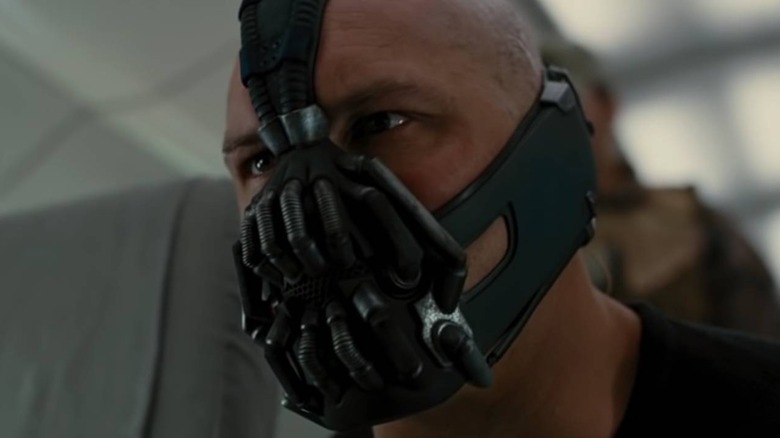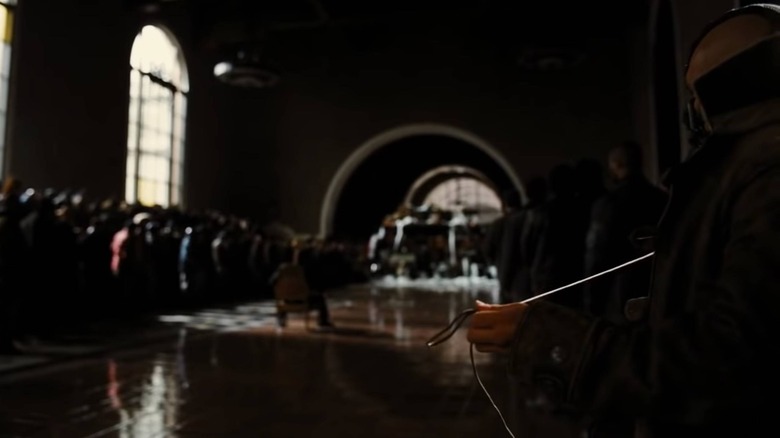The Dickens Reference You Probably Missed In The Dark Knight Rises
Christopher Nolan's "The Dark Knight" trilogy helped elevate the superhero genre. It grounded these larger-than-life characters into a realistic setting, playing more like intimate crime dramas than something akin to "Fantastic Four" or "The Hulk." That's not even mentioning Heath Ledger's tremendous performance as Joker, for which he won an Academy Award. Moreover, with three movies, Nolan proved that superhero stories had a place within the more extensive discussion of what constitutes high art.
To accomplish this feat, Nolan pulled from a wide breadth of influences. Not only did he look toward some of the best Batman comics of all time, such as "The Killing Joke" and "Knightfall," but he also borrowed stylistically from crime thrillers like "Heat" (via The Hollywood Reporter). However, what may come as a surprise to fans is that Nolan and his brother Jonathan Nolan took inspiration from classic literature. Specifically, they took some cues from "A Tale of Two Cities" by Charles Dickens when it came to crafting the story of "The Dark Knight Rises" (via Coming Soon).
Some parallels are easy to spot, like how both stories deal with social upheavals occurring due to financial instability. However, Nolan generally likes to include ample Easter eggs in his movie, and if you look closely (and remember what you learned in your high school English classes), then you may be able to spot a sly nod to the novel hidden in the film.
Bane knitting is a reference to the villain of A Tale of Two Cities
During the courtroom scene of "The Dark Knight Rises," Scarecrow (Cillian Murphy) mentions that Bane (Tom Hardy) has no authority over the judge's ruling. That doesn't mean the antagonist isn't keeping a watchful eye on the proceedings, and at one point, the camera pans out to reveal Bane knitting of all things. Even supervillains need hobbies, but there's actually a contextual reason why Bane engages in this particular activity.
As Film Facts points out on Twitter, Madame Defarge, the sinister antagonist in "A Tale of Two Cities," also possesses an obsession with knitting. One passage from the novel illustrates how she would knit at seemingly the most inopportune times:
"Eh well! How then?" demanded madame, tying another knot, as if there were another enemy strangled.
During this scene, Defarge sentences people to death, and the knitting symbolizes how callous she truly is. She can perform a task commonly affiliated with sweetness and turn it dastardly. The parallels between the characters don't end there. Madame Defarge lost her loved ones and suffered immensely at the hands of the Evremonde brothers, so when she finally ascends into a place of power, she seeks vengeance on all of the aristocracy. The same motivation plagues Bane, who grew up in an underground prison and now seeks to rid Gotham of every person who belongs to the 1%, including those who helped him obtain a stranglehold on the city.
To really drive the point home that "The Dark Knight Rises" is Dickensian all the way through, Commissioner Gordon (Gary Oldman) reads a passage from "A Tale of Two Cities" during some of the film's final moments. Of course, we won't tell you to watch "The Dark Knight Rises" in place of reading Charles Dickens's work for English class, but it may make for a worthwhile supplement.

